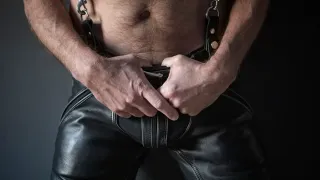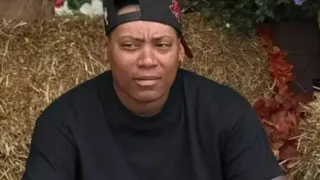May 1, 2015
Dior and I
Roger Walker-Dack READ TIME: 4 MIN.
Bernard Arnault, the CEO of LMVH, took a year to decide on who to appoint as the new Creative Director of DIOR after the unceremonious firing of John Galliano for his very public display of anti-semitism (alleged). The interim in-house designer's collection had been very poorly received, so Arnault knew that he had to think outside of the box to save the reputation of the House.
His unexpected choice was the Belgian Designer Raf Simons, who had made a name for himself with his sublime minimalist collections for the Jil Sander label. Even though Simons had never designed a Haute Couture collection, Arnault threw him into the deep end, making this his first task and giving him just two short months to do it.
The Company also gave filmmaker Fr�d�ric Tcheng what initially seemed like carte blanche to film the whole process from the time that Simons was first introduced to his new team right through to the Runway Show itself. Tcheng was a wise choice, as he had been part of the team who had made the Diane Vreeland documentary "The Eye Must Travel" and the equally excellent "Valentino The Last Emperor." This time, however, he was to be the sole director.
Simons is a quiet, reserved man, making him the total opposite of his predecessor. He relies completely on his right hand man Pieter Muller, who is more open and approachable, to execute a great deal of the work. Simons, who insists on doing away with the traditional formality of the House and being called Raf by one and all, creates in a democratic manner. A very visual man who never actually sketches, he compiles extensive "mood boards" of the "looks" that he wants to constitute his debut collection that has to be good enough to lift Dior out of its current doldrums.
He is not only fortunate enough to have a design team who are both eager and capable of interpreting his concepts into reality, he has two workrooms whose staffs have for decades been lovingly hand-making all the couture clothes up in the attic floors of the building. Managed by two Ateliers (one for tailoring, the other for dresses), they are staffed by a dedicated bunch of seamstresses who, at times, seemed to show far more passion about the actual collection than their new Creative Director.
Simons can, and does, get anything he wants to help make this collection, even if it means his fabric buyer must beg and plead with her printers, or the seamstresses must work into the early hours of the morning. Tcheng gives us a fascinating fly-on-the-wall look at how it all comes together, but apart from one incident when an Atelier is in New York doing a fitting for a customer rather than toiling away upstairs in the Workroom, the whole process is presented as being totally drama-free, which is completely unrealistic. There is one very real and funny moment when Simons wants a new white jacket made in black, and so to see what it would look like, Muller just takes a can of spray paint to it.
Tcheng gets full marks for the innovative way that he incorporates part of the legacy of Mr. Dior himself by imagery and narrating parts of the Couturier's own biography. Simons is also aware of what he has inherited by stepping into the legendary designer's shoes (although he is the seventh one to date to have done so). Whilst he looks through the House's archives as part of his research, he makes a point of stating that "the past is not romantic to me; it's the future that is romantic."
For a venue for the show itself, they find an empty grand house in the center of Paris, and whilst walking around its many floors with his team, Simons says that what he would like to do is take the concept of Jeff Koons Puppy (outside Guggenheim in Bilabo) and cover the interior with walls of flowers. What Simons wants Simons gets, although when Arnault comes in to see a test run of the walls he takes the PR Director away from the prying camera in order to ask, "How much is this going to cost?" Whatever the answer was, he still stumps up for it. Come Show Day, Simons is walking Anna Wintour into the venue to face this stunning beautiful sight; she takes off her dark glasses for one quick moment to mutter, "No budget restrictions, then?" with a smirk on her face.
When the show begins in front of a star-studded audience (and seemingly the entire world's press), we finally get to see in full what we have, until now, only glimpsed in part: The clothes themselves. They are nothing short of stunning -- something that will be borne out by the clamor of congratulatory hugging afterwards, followed by rave reviews in the media the next day. But now, as the skinny models glide from room to room whilst everyone is looking on in awe, we finally see the emotional side of Simons as he breaks down and quietly weeps, and has to be comforted by Muller.
The lack of real drama was not the only surprise. That Belgian Simons couldn't speak French was quite a shocker, and hardly something that Tcheng could change. What he was responsible for, however, was the total absence of Galliano's name, as if he never existed. Despite this unforgivable omission, I was still completely enamored by this otherwise-enchanting record of a very talented man and his team creating works of art that would be admired by so many, and worn by so few.






